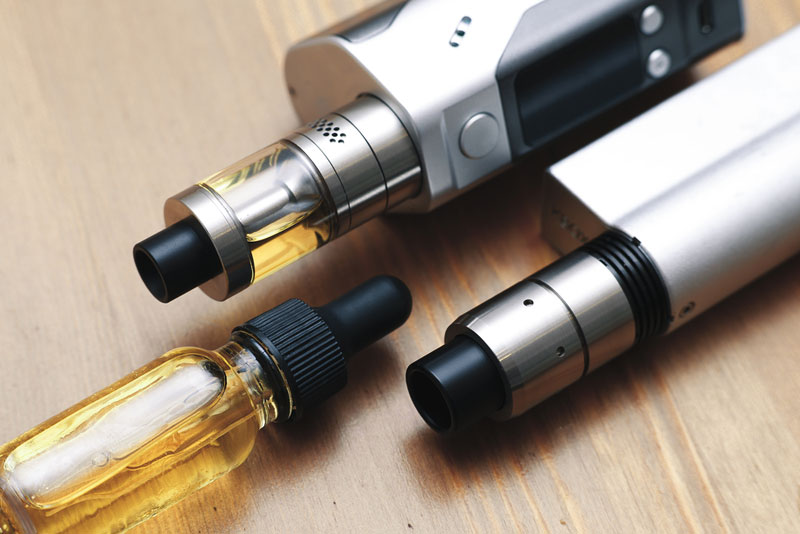Child Swallows E-Cig Liquid After Medication Mix-Up

A 6-year-old girl in Oregon experienced severe nicotine poisoning after her parents accidentally gave her liquid nicotine meant for electronic cigarettes instead of a children's liquid pain reliever, according to a new report of the girl's case.
The child survived, but nicotine poisoning can be fatal, and the researchers warned that such cases could become more common as e-cigarettes rise in popularity.
"As electronic cigarette use proliferates, children are now increasingly at risk of toxicity from ingestions of much larger quantities of nicotine from highly concentrated refill liquid, as in our case study," Dr. Matthew Noble, an emergency medicine physician at Oregon Health and Science University, and a co-author of the report, said in a statement.
The girl had previously sprained her ankle, and was taking children's Motrin (which contains ibuprofen) for pain relief. But when the bottle was finished, the girl's mother used it to store some liquid nicotine that she had bought online to use in an e-cigarette.
The child's father didn't know the Motrin bottle contained nicotine, and he gave the child a 10-milliliter dose of the liquid for her pain, according to the report. The girl immediately felt a burning sensation in her mouth and throat, which led the father to take a small sip of the liquid. He realized it was liquid nicotine and immediately called poison control and an ambulance, the report said. [27 Oddest Medical Cases]
Before the paramedics arrived, the girl lost consciousness and began involuntarily jerking her limbs. She later regained consciousness, but did not respond to questions or commands, the report said.
The girl was taken to the emergency room, where she began vomiting and sweating, and her pulse dropped from 150 beats per minute to 60 beats per minute, the report said.
Sign up for the Live Science daily newsletter now
Get the world’s most fascinating discoveries delivered straight to your inbox.
Doctors gave her an anti-nausea medication and a sedative, and placed a tube in her throat to keep her airway open. They also gave her a medical form of charcoal used to help treat drug overdoses, because it absorbs nicotine and other drugs.
About an hour after she arrived at the ER, the girl was admitted to the intensive care unit and placed on a ventilator overnight. The next day, she was taken off the breathing support and was able to respond to commands. Doctors gave her a physical exam, which showed normal results, and she was released from the hospital.
The researchers estimated that the child consumed about 700 milligrams of liquid nicotine. Some studies have estimated that ingesting as little as 500 mg of nicotine can kill an adult. An average regular cigarette delivers about 0.2 to 2.4 mg of nicotine. [10 Scientific Quit-Smoking Tips]
In addition, a blood test done about an hour after the girl arrived at the hospital showed she had a blood level of nicotine of 348 nanograms per milliliter. The level of nicotine in the blood after an adult smokes a regular cigarette is about 12 to 54 ng/ml, the report said.
The researchers also tested the liquid nicotine that the child ingested, and they estimated that the concentration of nicotine in the original product was more than double the concentration that was listed on the product label.
"This finding supports previous work demonstrating that electronic cigarette refill containers may have unreliable commercial labeling and widely variable actual nicotine concentration compared with that advertised," the researchers wrote in their report.
The report is published in the January issue of the journal Annals of Emergency Medicine.
Original article on Live Science.

Rachael is a Live Science contributor, and was a former channel editor and senior writer for Live Science between 2010 and 2022. She has a master's degree in journalism from New York University's Science, Health and Environmental Reporting Program. She also holds a B.S. in molecular biology and an M.S. in biology from the University of California, San Diego. Her work has appeared in Scienceline, The Washington Post and Scientific American.











